Medical Myths: Do We Really Use Only 10% of Our Brains?
The human body is, without a doubt, the most perfect creation of any Supreme Being or natural process responsible for the existence of life on earth. We are not the strongest, the biggest, nor the fastest living beings, but we are aware of it, and we have managed to create tools to overcome our natural limitations, and give us abilities that to any other living being could seem like superpowers; Imagine a cat being able to communicate instantly with another, anywhere in the world, or a rat being able to fly and cross the oceans dividing the continents. Normally, we cannot do any of these things on our own, but thanks to our technological developments, we are capable of all that and much more. On a not too distant future, we may be able to create a virtual equivalent to life itself, using artificial intelligence. Would that make us, for all intents and purposes, Gods, capable of the maximum act of creation? Hard to say, but I propose that the answer be based on the quality of our beards (and yes, that would apply to women as well).
Despite this, we have not yet reached the apex of our evolution, and it is possible that we are actually quite far from it. But if we look at our achievements as a race, the truth is that we have done some pretty impressive things throughout our history, with the occasional stain on our record (like pizza with pineapple), but come on, we haven't done so badly , especially if we consider that some 15,000 years ago we lived in caves. Dinosaurs were the dominant race for millions of years, and they never even got to the point of lighting a bonfire on purpose. Think about that the next time you get scared watching Jurassic Park.
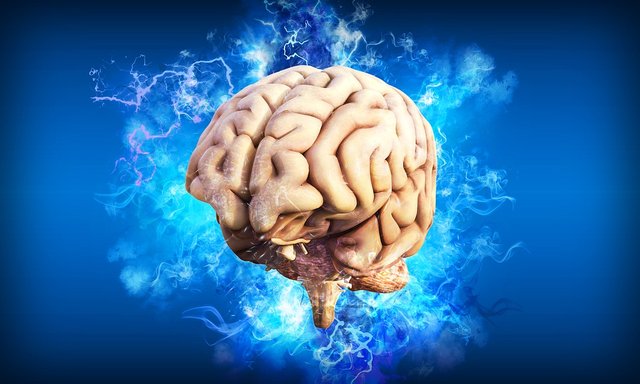
All this has been possible due to a single element that distinguishes us from others, especially from our close but not so capable cousins,
But having heard this, you have surely wondered, is there really an unexploited repository of mental ability hidden somewhere in our brain? How can we unleash our full potential, and what will we be able to do with it? Is it through meditation? Could it be that the Tibetan monks were always right, and secretly have fights for fun, using the Force as if they were Jedi Masters, behind the walls of their monasteries?

Photo taken seconds before the one on the right Force-choked the other and pulled out a lightsaber
This myth is frequently repeated as fact, especially by supposed psychics who use it as justification for their alleged abilities, but to find out if it really is possible we have to understand a little about how the brain and its processes work. As you read the following paragraphs, think about the curious fact that your brain is reading about itself and discovering everything it does without knowing it. Realizing this will not give you any power, but it is still curious.
First, it is important to note that although we tend to think of the brain as a single spongy, wrinkly mass that controls all bodily processes, the truth is that what is commonly thought of as "the brain” is actually called the cerebrum, and it is only one part of the more complex and multifunctional whole called brain. The cerebrum is the most superficial part, divided into two hemispheres and several areas (which we will see in greater detail later), that while fulfilling a majority of tasks, such as the higher cognitive function (the set of complex skills such as attention, memory, or orientation, which make us aware of ourselves), language, and the control of emotions, does not take care of everything that happens in our bodies simultaneously during the course of our lives.
Aside from the cerebrum, there is also the cerebellum, the brain's second largest organ, which is involved in processes such as posture control, regulation of physiological tremors, and motor precision for small and accurate movements. We have the hypothalamus and the pituitary and pineal glands, which basically are responsible of releasing hormones that modify our behavior by inducing things like thirst, hunger (now you know what to blame for breaking the diet, it is not that you lack self-control, it is your hypothalamus conspiring against you), sleep or sexual desire, and of regulating body temperature. And finally, the brainstem, made up of the midbrain, the pons, and the medulla, which control automatic functions, such as breathing, blood pressure, and the regulation of the heart rate ( together with the sinus node located within the heart itself), and visceral ones such as digestion and excretion of feces and urine.
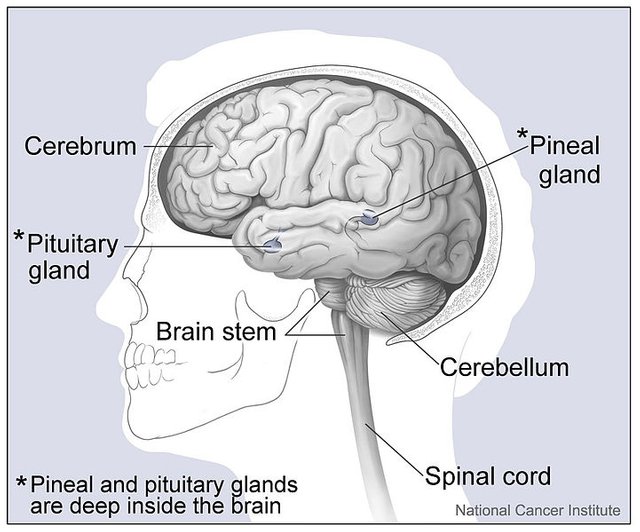
Now, we understand the anatomy, but how does the brain do to control the whole body and perform all these actions? Well, I will try to answer it as simply as I can. Every organ has a functional cell that is in charge of, well, exercising the function of that organ (medical names are more practical than creative). In the case of the brain, its functional cell is the neuron, and its job is basically to receive information that comes from the outside in the form of stimuli (input), analyze and process it, and then generate and transmit an appropriate response (output). Stimuli can come from either muscle or gland cells, or other neurons, and manifest in an electrical or electrochemical current called action potential. The action potential enters the neuron through one of its two poles, which has filaments called dendrites that receive the input, it then travels through the body or soma reaching the nucleus. It is interpreted and processed both in the soma and in the nucleus, so that another impulse is generated in response, which then comes out through another filament in the shape of a cable called axon. This axon is partially covered by sheaths of a substance called myelin that helps to insulate it, and regulates the speed and uniformity of the action potential, which finally leaves through the terminal part of the axon, and this output then travels to another neuron or cell. This communication and the exchange of information and stimuli between neurons occurs in an almost imperceptible time of only milliseconds, is called synapse, and as you probably already understand, it is the process that allows us to do everything that we do. This kind of dialogue between neurons and the subsequent dance between inputs and outputs is what makes us move, feel, hear, speak, think; be ourselves, and seen from a certain point of view, it has an undeniable beauty.
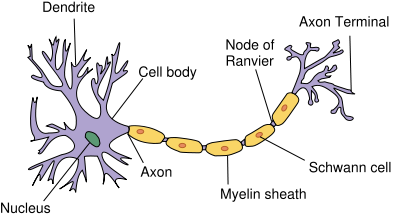
Even if the neuron itself looks like some kind of eldritch worm
Even vastly oversimplifying everything, it may still sound complex, but wait, there is more; apart from neurons there are also other cells in the brain, and in fact, they are present in an amount 10 to 50 times greater than neurons (this taking into account that we have between 80 and 100 billion neurons ). I'm talking about the glial cells or neuroglia, and their function is essentially one of support: they cover the axons with myelin, provide nutrients to the neurons, help to repair them if they are damaged, and generally allow the brain to perform its functions appropriately. Imagine them as worker cells, making sure everything is done the right way, presumably while wearing a small yellow vest and a construction helmet.
We are getting closer to the truth of this myth, by understanding the inner workings of all parts of the brain. The one thing left to explain is probably the most important in order to discovering whether we have really been using a fraction of our mental capacity: I said earlier that the cerebrum was separated into areas, each being responsible for controlling something different. There are 6 of these areas, called lobes, and in summary they are the Frontal (controls the movement, reasoning and resolution of complex problems), the Parietal (top lateral areas, coordinates balance and receives and interprets sensations such as touch, temperature and pain), the Occipital (posterior part, receives and interprets visual information), the Temporal (lower lateral areas, it is responsible for hearing, understanding speech, and complex visual tasks), the Insula (located inside the brain, plays secondary roles in smell and pain perception, and is related to the emotions) and the Limbic (connects the first 4 lobes inside the brain, it mainly fulfills a structural function) lobes.
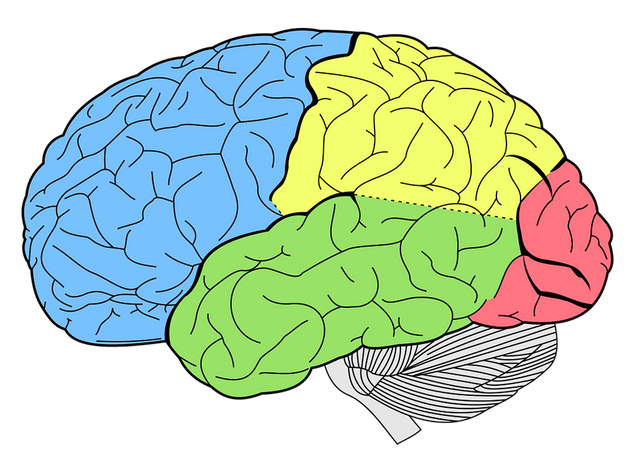
Now, surely you still have several questions, like: Why do you say this is the most important part? Are such in depth explanations really necessary? What are you getting at? Well, patience: we have arrived to the answers.
As you can see, each part of the brain is utilized and each one has a specific function (however in case of serious injuries that cause tissue death, some areas are able to take on the tasks of the others, replacing them and preserving life), so knowing about the lobes, we can see that although not all of it is activated at the same time at all times, we always use a big percentage of our brain, much higher than that supposed 10%, even when we sleep. If this were not so, brain injuries would be minor emergencies, and would not affect our performance the way they do. But what if instead of volume, proponents of this myth say that we only use a fraction of our neurons, rather than referring to brain function by area or volume? Well, it is true that "only" 10% (approximately) of brain cells are neurons, but as I explained, the other 90% are glial cells that, it could be argued, work more than the neurons themselves, each of them having to maintain the proper functioning of the entire neural system. Even so, it is true that only 5% of our neurons are active at any given time (5-6 billion, an amount not as small as it seems), but this is because synapses are electrical in nature, and as you can imagine, having excess electricity flowing through your brain is not exactly healthy; Being able to activate that remaining 95% would not give us superpowers or new abilities, more like a seizure, not very effective in fighting crime or entertaining your friends at parties. Not in a good way, at least.
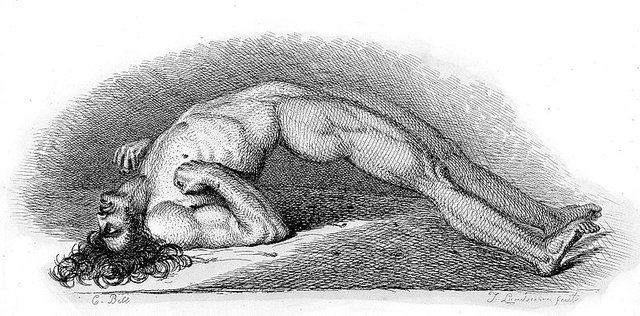
Epilepsio, the least known member of the X-men
And to hammer in the final nail in this myth’s coffin, there is the simple existence of physical limitations: the brain, despite representing only 2 to 5% of body weight, consumes 20% of the body's resources, mostly oxygen and glucose. So if we could multiply its power by 10, we would spend 200% of the fuel we have available. Go figure where that is supposed to come from. In short, all of the capacity of our brain is available and usable from the moment we are born; each area is exploited and used countless times per day. What we see is what we have, and while some use it better than others, it is solely up to you to get the most out of your brain.
References:
- Guyton, A.C. & Hall, J.E., Textbook of Medical Physiology, 11th Edition, 2011.
- MSD Manuals – Overview of Cerebral Function
- NCBI – How does the brain work?
- Scientific American – Know your neurons what is the ratio of glia to neurons in the brain?
- Scientific American – Do we really use 10% of our brains?
- The Two Percent Company – A piece of our mind – about ten percent